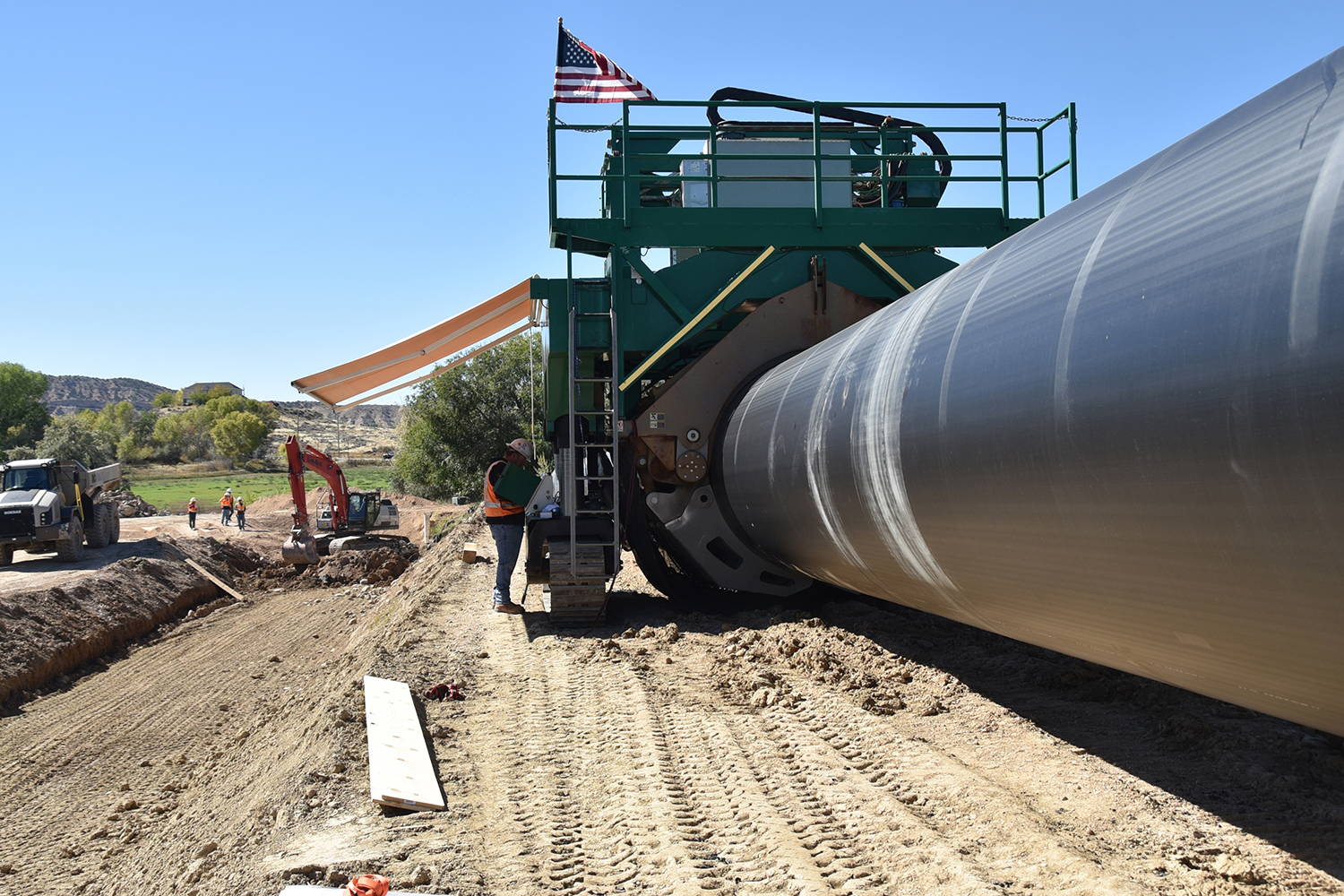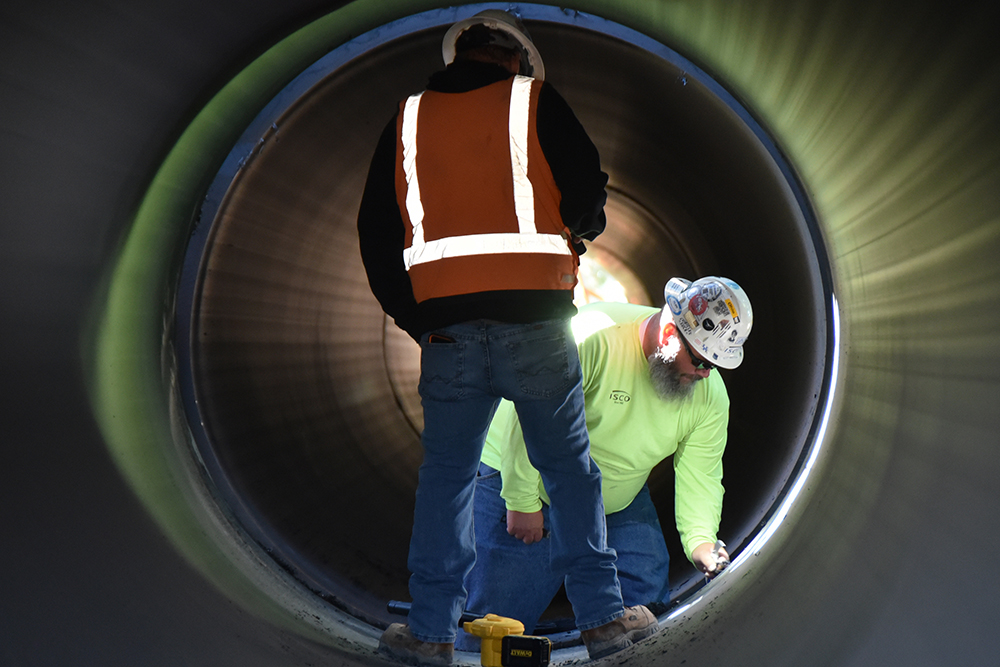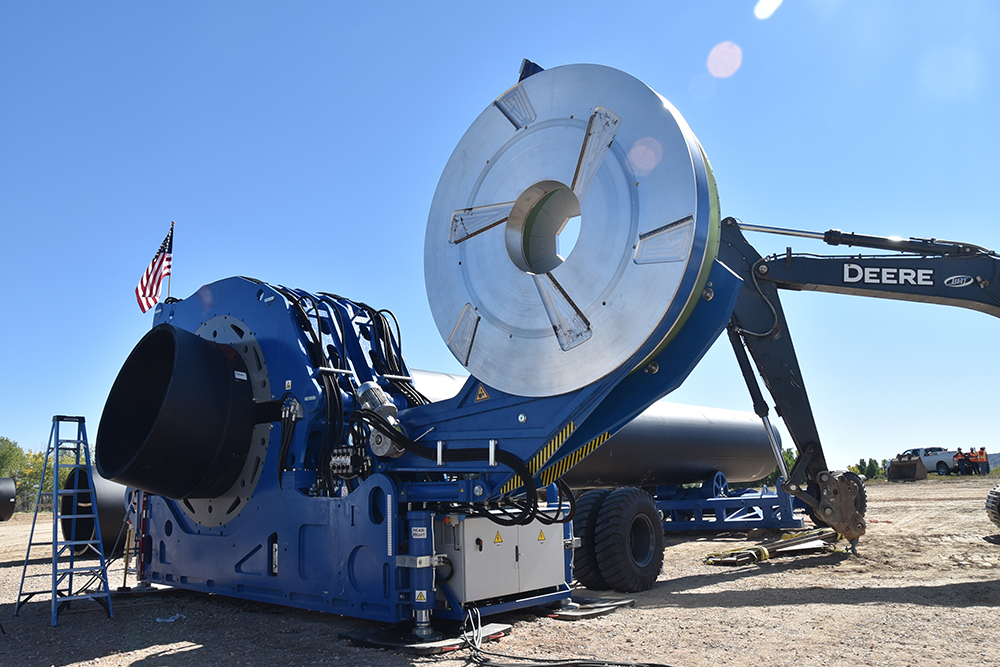 Workers at the Steinaker Service Canal Pipeline Project site operate a Talon fusing machine to fuse together two sections of 84-inch-diameter HDPE pipe.
Workers at the Steinaker Service Canal Pipeline Project site operate a Talon fusing machine to fuse together two sections of 84-inch-diameter HDPE pipe.
The pipe dreams of the Steinaker Service Canal in eastern Utah are finally coming true.
When irrigation systems were originally set up in the West, open canals were the best way to move water using the limited resources available at the time. As technology and access to resources have improved, more and more open-service canals are being replaced with high-pressure, enclosed pipelines.
Since construction was completed in 1961, the Steinaker Service Canal has delivered water from Steinaker Reservoir to project lands in Ashley Valley, in northeastern Utah.
According to Supervisory Civil Engineer of the Provo Area Office Field Engineering Division Spencer Strand, “The Uintah Water Conservancy District is enclosing the Steinaker Service Canal in order to reduce water losses due to seepage into canal banks and to improve operations by automating the pipeline.”
Running approximately 12 miles from Steinaker Dam, the service canal loses approximately 5,000 acre‑feet of water every year, accounting for about 25 percent of releases from the reservoir.
In the early 2010s, the Uintah Water Conservancy District undertook a study to improve the efficiency of the Service Canal, eventually deciding to enclose the existing open canal in a pressurized pipe. In addition to eliminating seepage losses, the pipe would improve efficiencies by providing automated deliveries of pressurized irrigation water to end users.
Due to funding limitations, the district decided to construct the pipeline in phases, or reaches, beginning at the end of the canal farthest from the dam. Reach 1 was constructed in 2017 and 2018, comprising the installation of approximately three miles of pipe. The construction contract for Reaches 2 and 3A (comprising another three miles of pipe) was awarded in June 2022.
“They have already piped 3 miles of the canal,” explained Strand. “This project will pipe almost 3 more miles. The entire canal is 12 miles long, so there will be 6 miles left un-piped. That portion will be piped in the future, based on the availability of funds. Eventually, the entire canal will be piped right up to Steinaker Dam and the outlet will be converted from a gravity flow pipe to a pressurized outlet so the entire pipe will be pressurized.”
What makes this project unique is the size of the pipe they are using to replace the canal. At 84 inches (7 feet) in diameter, the new Steinaker service pipeline is currently the largest diameter HDPE (high-density polyethylene) high-pressure water pipe in the nation. Each 53‑foot‑long section of pipe weighs 16,500 pounds and each section is trucked into the project site one at a time. The sections are then fused together on site using fusing machines specifically designed to work with HDPE pipes of that diameter or larger.
With the completion of Reaches 2 and 3A, half of the service canal will be enclosed in pipe. This contract will be substantially complete in April 2023 with final completion scheduled for November 2023.




